
eBook - ePub
101 Rules of Thumb for Sustainable Buildings and Cities
Huw Heywood
This is a test
Compartir libro
- 224 páginas
- English
- ePUB (apto para móviles)
- Disponible en iOS y Android
eBook - ePub
101 Rules of Thumb for Sustainable Buildings and Cities
Huw Heywood
Detalles del libro
Vista previa del libro
Índice
Citas
Información del libro
People across the world are becoming more aware of the need for the buildings and cities they live and work in to be sustainable, but the issue of how to be sustainable can seem a confusing and complex one. These rules of thumb provide universal guidelines for the sustainable design of both buildings and the urban realm. It's a global primer and textbook for anyone interested in understanding sustainability in the built environment, an ideal starting point for students as well as an aide memoir for more experienced readers and practitioners interested in this field.
Preguntas frecuentes
¿Cómo cancelo mi suscripción?
¿Cómo descargo los libros?
Por el momento, todos nuestros libros ePub adaptables a dispositivos móviles se pueden descargar a través de la aplicación. La mayor parte de nuestros PDF también se puede descargar y ya estamos trabajando para que el resto también sea descargable. Obtén más información aquí.
¿En qué se diferencian los planes de precios?
Ambos planes te permiten acceder por completo a la biblioteca y a todas las funciones de Perlego. Las únicas diferencias son el precio y el período de suscripción: con el plan anual ahorrarás en torno a un 30 % en comparación con 12 meses de un plan mensual.
¿Qué es Perlego?
Somos un servicio de suscripción de libros de texto en línea que te permite acceder a toda una biblioteca en línea por menos de lo que cuesta un libro al mes. Con más de un millón de libros sobre más de 1000 categorías, ¡tenemos todo lo que necesitas! Obtén más información aquí.
¿Perlego ofrece la función de texto a voz?
Busca el símbolo de lectura en voz alta en tu próximo libro para ver si puedes escucharlo. La herramienta de lectura en voz alta lee el texto en voz alta por ti, resaltando el texto a medida que se lee. Puedes pausarla, acelerarla y ralentizarla. Obtén más información aquí.
¿Es 101 Rules of Thumb for Sustainable Buildings and Cities un PDF/ePUB en línea?
Sí, puedes acceder a 101 Rules of Thumb for Sustainable Buildings and Cities de Huw Heywood en formato PDF o ePUB, así como a otros libros populares de Arquitectura y Arquitectura general. Tenemos más de un millón de libros disponibles en nuestro catálogo para que explores.
Información
Chapter 1
The Principles of Sustainability

- The nature of sustainability
- The welfare of future generations
- Creating sustainable environments
- Climate change
1. There’s Only One Planet Earth
There is only one earth, and its ability to support an ever-increasing human population is limited. Based on today’s rate of consumption, we need one and a half earths to provide all our resources and to absorb our waste and CO2. We are treating the planet like an overdrawn bank account. At this rate, by 2050 we would need the support of three earths, which we do not have. There is an ethical duty to design the built environment to operate within the planet’s means, and to a minimum ecological footprint.


Rule 1
2. Sustainability Means Thinking about Tomorrow Today
Our decisions and actions as designers today will have an impact on the planet for future generations. The designer’s goal is the improved long-term quality of both human life and of supporting ecosystems. Make all decisions with future generations in mind.

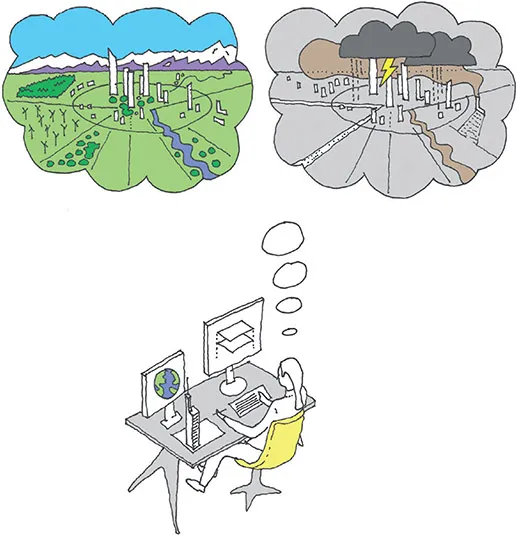
Rule 2
3. Economy, Equity, Environment: The Three Pillars of Sustainability
These three pillars of sustainability are known as the ‘three Es’. All of society benefits from buildings that are affordable to procure and functional to operate, now and into the future. Society must need and want development for it to be inclusive, it must have cultural and historical relevance and it must be joyful and useful to all. And because good design is enduring, it always seeks to protect and enhance the environment and its ecosystems.

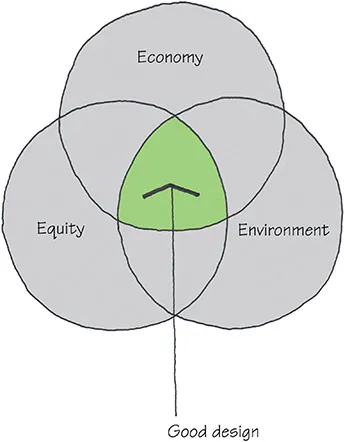
Rule 3
4. Sustainable Design is a Method, Not a Style
Buildings and cities will only be sustainable if we set out intentionally to make them so, and this requires an interdisciplinary understanding of the economic, social, environmental and technical issues to be applied from the outset. Once a building has been designed, it is too late to make it sustainable: bolt-on features and gadgets that contribute little or nothing of environmental value are known as ‘eco-bling’, and they are often merely boastful. Set out to make buildings sustainable, or else they will not be.

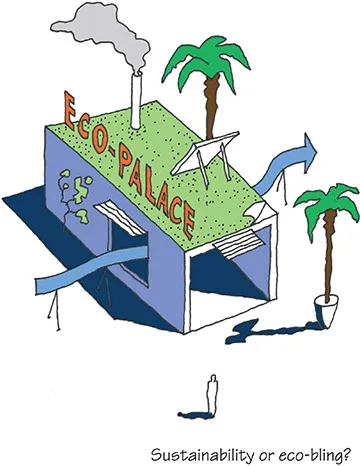
Rule 4
5. Sustainable Design is 6-Dimensional
A sustainable building is holistic, conceived with its whole life in mind. The effectiveness of its environmental design qualities, as well as its environmental impacts, can be examined during the design stages. This is possible because traditional 2D drawings have become intelligent 3D virtual models, in which time is the 4th dimension and the lifetime cost of our decisions is the 5th. In a 6D model, the as-built project information would become available to the owner in order to enable sustainable operation of the building. Innovate with the available tools, to create sustainable environments–design in six dimensions.

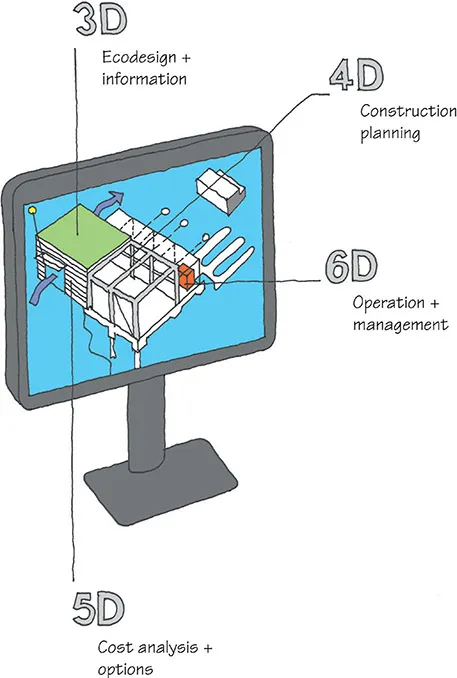
Rule 5
6. How ‘Green’ is Your Building?
‘Green’ means sustainable, but there are many shades of green. A ‘light-green’ building will target a few of these rules of thumb. A ‘deep-green’ building will successfully adopt most of them. Aim for the deepest green possible. A deep-green building will:
- Have a highly energy-efficient envelope
- Be a net producer of energy and a zero-carbon emitter
- Optimise use of resources and embodied energy
- Minimise water use and waste
- Be healthy and non-polluting
- Be long lasting, adaptable and easy to dismantle

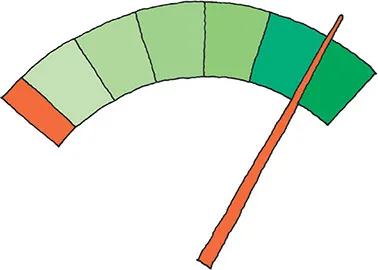
Rule 6
7. What on Earth is the Environment?
The ancient Greeks did not have the word ‘environment’. The word as we use it today is relatively ...